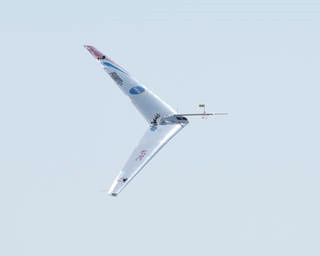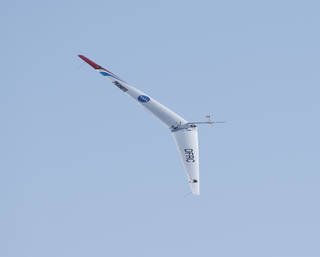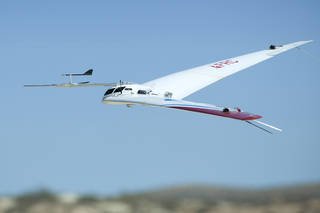Phos,
Bowers answers many of your questions in
this paper from 2016. However, contrary to his paper, it is my understanding that
Horten had a pretty good understanding of proverse yaw.
This presentation and
the thesis upon which it was based may also be of interest. Shifting load away from the tips takes weight out of the wing, & this will reduce fuel burn (or increase payload fraction if you prefer) even if span is constrained, though the lift distributions in these links may not produce proverse yaw.
There is a sort of hierarchy of loads & planforms.
Elliptical loading with an elliptical planform is the simplest arrangement intellectually. Induced drag is always the minimum for a planar lifting system (but note
Kroo's work on non-planar lifting systems) of the selected span. The problem with this is that the shape is complicated, so it's expensive to make (or was, in the pre-CNC era), & because the whole wing is at the same lift coefficient, it should theoretically all stall at the same time (in reality, due to Reynolds number effects, it will probably tip-stall).
Many manufacturers select non-elliptical planforms to cut manufacturing cost, & used aerodynamic or geometric twist to get closer to elliptical loading at the cruise design point if they were worried about such things. This requires a bit more thought, because the cruise design point has to be positively selected if it is to coincide with minimum drag.
If the aeroplane is being designed to fly at some sort of economic optimum speed, it may be attractive to deliberately tune the wing for minimum induced drag at the "wrong" (on the low side) lift coefficient to produce a higher value of
Carson's speed. Naturally, there's more to life than the cruise design point, & this may affect things somewhat.
The Prandtl / Horten approach is pretty profligate in its use of span, but has the advantage that it may permit the vertical tail to be eliminated. The limiting factor is likely to be OEI asymmetry in multi-engine vehicles, though there are obvious ways to solve this.
It's especially interesting for gliders (at very high L/D circling in thermals is less important), but the current span-limited classes mitigate against it to some degree.
Flying wings do well when assessed in terms of wetted aspect ratio (
Liebeck is pretty clear that this is one of the main objectives of his BWB work), & Prandtl-type lift distributions make them look even better, but the poor span efficiency means that it's not really fair to plot them on the same curve as conventional aeroplanes. CoG range is ultimately likely to limit their commercial potential; an asymmetrically loaded Horten or Prandtl wing will naturally yaw & this may cause some very interesting stability & control problems.
Very large spans may also cause ground handling / tip-over problems, especially in cross-winds.
It's a very interesting trade space. I'm pretty sure that tube & wing designs are closer to the manufacturing optimum than any sort of global optimum, but unfortunately the Industry is very conservative.
His earlier video posited that the B2 flies with its decelerons cracked slightly for yaw stability, is that the reason or is it to conceal the B-2's minimum RCS?
AFAIK this is due to boundary layer thickness producing a dead-band, which would increase lag in the control system. I suspect that in "stealth mode" the aircraft will use differential engine thrust for yaw control, but this will also be laggy & may hurt engine life. The lag may also produce some Dutch roll which isn't dangerous but may be nausea inducing (see also the history of the yaw damper on the 707); given the long mission durations, most of which don't require full stealth, it's pretty logical to have more comfortable control laws so that the crew can get better quality sleep in their lawn chairs.



